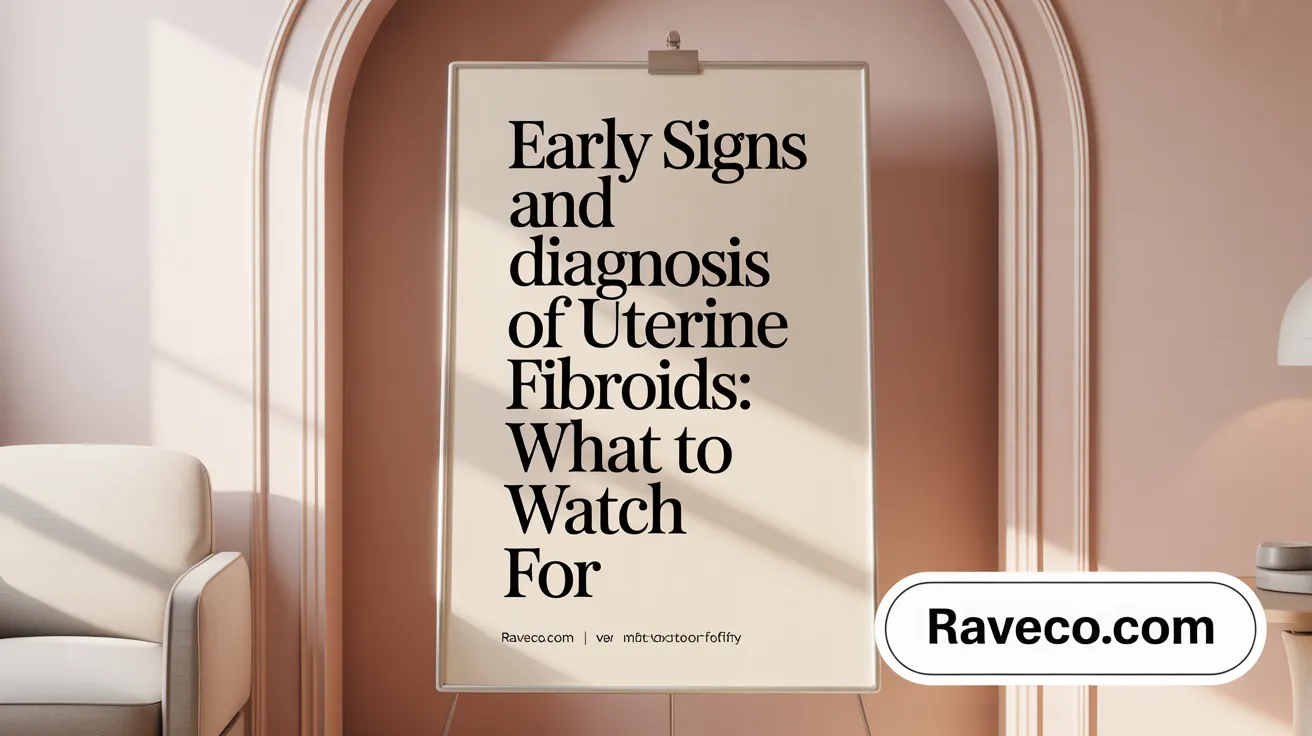Navigating Your Path to Parenthood: Understanding Infertility Evaluation

Understanding Uterine Fibroids and Their Impact
Uterine fibroids are among the most common benign tumors affecting women during their reproductive years, with up to 80% of women developing them by age 50. While many women experience no symptoms, fibroids can cause significant issues such as heavy menstrual bleeding, pelvic pain, pressure symptoms, and fertility challenges. This article explores comprehensive patient advice, diagnostic approaches, symptom management, and diverse treatment options tailored to individual needs and goals. Empowering women with knowledge facilitates proactive healthcare and improved quality of life while living with fibroids.
What Are Uterine Fibroids and Who Is Most Affected?

What are uterine fibroids and how common are they?
Uterine fibroids are benign (noncancerous) tumors made up of muscle and fibrous tissue that grow either within the uterus wall or on its surface. They are very common, affecting up to 80% of women by the age of 50. These growths vary in size and number, and while some women experience no symptoms, others may face significant health issues. For more information, see Uterine fibroids overview and Fibroids prevalence in women.
Who is most at risk for developing fibroids?
Fibroids are more prevalent as women approach menopause, especially in their 40s and early 50s. African American women have the highest risk, with up to 90% diagnosed by age 50. Other risk factors include a family history of fibroids, obesity, and certain lifestyle habits like high consumption of red meat and low intake of fruits and vegetables. Learn more about Fibroid risk factors and prevalence.
What are the common symptoms and effects on quality of life?
Symptoms can vary widely; some women have no symptoms, while others suffer from heavy menstrual bleeding, pelvic pain, frequent urination, and abdominal pressure. These symptoms often affect daily activities and emotional well-being, causing distress and anxiety for many. Details about Symptoms and quality of life impact of uterine fibroids are available.
How do hormones influence fibroid growth?
Hormones, particularly estrogen and progesterone, play a central role in fibroid development and growth. Fibroids tend to enlarge during reproductive years when hormone levels are higher and often shrink after menopause when hormone levels decline. More on Hormonal influence on fibroids and fibroid growth.
Understanding who is affected and how fibroids behave helps in seeking timely care and managing symptoms effectively. For comprehensive management and treatment options, refer to Fibroid diagnosis, treatment, and management.
Symptoms and Diagnosis: Recognizing The Signs Early

What symptoms do uterine fibroids cause?
Uterine fibroids can cause a wide range of symptoms that affect daily life. Women may experience heavy or prolonged menstrual bleeding, which can lead to anemia and fatigue. Pelvic pain or a feeling of pressure in the lower abdomen is common, sometimes accompanied by back pain. Frequent urination occurs when fibroids press on the bladder, while pressure on the rectum can cause constipation. Pain during intercourse and abdominal bloating are also reported. In some cases, Submucosal fibroids impact on fertility or increase the risk of miscarriage.
How are uterine fibroids diagnosed?
Diagnosing uterine fibroids begins with a pelvic examination, where doctors may detect an irregularly shaped uterus or feel lumps. The primary diagnostic tool is transvaginal ultrasound, which provides detailed images to identify fibroids, their size, and location. When ultrasound results are inconclusive or more detailed assessment is needed, MRI and advanced imaging or hysteroscopic methods like hysterosonography may be employed. These help in planning treatment by accurately mapping fibroids.
Why is early diagnosis and symptom monitoring important?
Monitoring symptoms like heavy bleeding or pelvic pressure allows timely diagnosis, which is crucial for managing fibroids effectively. Early detection helps prevent complications such as severe anemia or impact on fertility. Women experiencing new or worsening symptoms should consult their healthcare provider promptly (Living with uterine fibroids).
How do fibroids impact fertility and pregnancy?
While many women with fibroids conceive and carry pregnancies normally, fibroids can affect fertility depending on their size and location. Fibroids within the uterine lining (Submucosal fibroids impact on fertility) are more likely to interfere with implantation or cause miscarriage. Proper diagnosis and tailored treatment can improve reproductive outcomes for those affected (Fibroids and fertility considerations).
Medical Management and Symptom Relief
What medications are used to manage fibroid symptoms?
Several medications are effective in managing the symptoms associated with uterine fibroids. Nonsteroidal anti-inflammatory drugs (NSAIDs) like ibuprofen are commonly used to alleviate pain. Tranexamic acid helps reduce heavy menstrual bleeding by promoting blood clotting. Hormonal treatments include the levonorgestrel-releasing intrauterine system (LNG-IUS), which decreases bleeding and offers contraception without impacting fertility, and oral contraceptives that lighten menstrual flow and reduce discomfort.
Gonadotropin-releasing hormone (GnRH) therapies, including both agonists and antagonists, are used to shrink fibroids by suppressing estrogen and progesterone production. GnRH agonists induce a menopausal-like state leading to significant fibroid size reduction, typically up to 50% within a few months, but their use is limited to short-term due to side effects such as hot flashes and bone density loss. The newer GnRH antagonists offer symptom control with a potentially better side effect profile and allow for add-back therapy.
What self-care and lifestyle recommendations support living with fibroids?
Alongside medical treatments, lifestyle modifications can play an important role in symptom management. Maintaining a balanced diet rich in fiber and omega-3 fatty acids helps support overall hormonal balance and may slow fibroid growth. Regular low-impact cardiovascular exercises, such as walking or swimming, may relieve discomfort and improve mood.
Stress management through practices like yoga, meditation, and mindfulness helps reduce hormonal imbalances and symptom severity. Limiting intake of alcohol and caffeine is advisable because these substances may increase hormone levels and inflammation, potentially exacerbating symptoms. Adequate sleep is crucial to support immune health, hormonal regulation, and pain management.
Incorporating these non-pharmacologic approaches alongside tailored medical therapies creates a comprehensive strategy for fibroid symptom relief and improves quality of life.
Surgical and Minimally Invasive Treatment Options
What surgical options are available for uterine fibroids?
Surgical treatment for uterine fibroids depends on symptoms, fibroid size, number, location, and the patient's desire to preserve fertility. The primary surgical options include:
Myomectomy: This surgery removes fibroids while preserving the uterus, making it an excellent choice for women who wish to maintain their fertility. It can be performed through hysteroscopic myomectomy, laparoscopic myomectomy, robotic, or open abdominal approaches, depending on fibroid characteristics.
Hysterectomy: This definitive procedure removes the entire uterus and effectively cures fibroids. However, it eliminates the possibility of future pregnancy and is generally reserved for women who have completed childbearing or when other treatments fail. Learn more about hysterectomy for fibroids.
Minimally Invasive Surgery: Techniques such as laparoscopic or robotic-assisted myomectomy provide less invasive surgical options with smaller incisions, reduced pain, and faster recovery times.
What less invasive procedures can treat fibroids?
Several minimally invasive procedures offer alternatives to traditional surgery, often leading to shorter recovery and fewer risks:
Uterine Artery Embolization (UAE): This outpatient procedure blocks blood flow to fibroids, causing them to shrink by 30-50%. It is effective for multiple or large fibroids but has an uncertain impact on future fertility. See more on the Uterine artery embolization (UAE) procedure.
Transcervical Radiofrequency Ablation (RFA): A newer incision-free technique that uses ultrasound guidance and radiofrequency energy to shrink fibroids up to 5 cm. This option preserves the uterus, and preliminary data suggest future pregnancy is possible. More about nonsurgical fibroid treatments.
MRI-guided Focused Ultrasound (FUS): This noninvasive method uses focused ultrasound waves under MRI guidance to thermally destroy fibroid tissue. It allows quick return to daily activities but has less established long-term outcomes and is not usually recommended for women planning pregnancy. Details at MRI-guided fibroid treatment.
Benefits, risks, and recovery considerations for procedures
Surgical treatments like myomectomy preserve fertility but have risks such as bleeding, infection, and possible fibroid recurrence. Hysterectomy provides permanent fibroid removal but involves longer recovery and hormone changes if ovaries are also removed.
Minimally invasive procedures generally offer shorter recovery, less pain, and avoid large incisions. However, they may carry risks like incomplete fibroid removal, potential impacts on fertility, and the need for additional treatments. For instance, UAE’s effect on pregnancy remains uncertain, and morcellation during surgery has FDA warnings due to rare cancer spread risks.
Choosing the appropriate intervention requires individualized discussion considering symptoms, desire for pregnancy, fibroid characteristics, and patient preferences, often involving a multidisciplinary healthcare team. Additional insights can be found in resources from the American Family Physician and NHS fibroid treatment options.
Fertility Considerations and Pregnancy Outcomes
How Do Uterine Fibroids Affect Fertility?
Uterine fibroids can pose challenges to fertility, especially when located near or within the uterine lining. They may interfere with embryo implantation or increase the risk of miscarriage, preterm delivery, and complications like placental abruption. Despite this, most women with fibroids can conceive and carry pregnancies to term successfully. For more information, see Fibroids and fertility considerations, Fibroids impact on fertility, and Submucosal fibroids impact on fertility.
What Treatment Options Preserve Fertility?
Women desiring future pregnancy often opt for treatments that maintain the uterus. Myomectomy—a surgical procedure to remove fibroids while preserving the uterus—is widely used for this reason. Minimally invasive options such as transcervical radiofrequency ablation are emerging and may preserve fertility, though more evidence is needed to confirm their safety and effectiveness during pregnancy.
Which Procedures Eliminate Fertility?
Definitive treatments like hysterectomy, which removes the uterus entirely, and endometrial ablation, which destroys the uterine lining, permanently eliminate the possibility of future pregnancies. These are generally reserved for women who do not wish to conceive.
Why Is Individualized Counseling Important?
Given the varied effects of fibroids and treatment implications on fertility, individualized counseling is essential. Shared decision-making between patients and healthcare providers helps tailor treatment plans based on symptom severity, fibroid characteristics, and reproductive goals (see Treatment options for uterine fibroids).
Can Pregnancy Occur After Treatment?
Pregnancy after fertility-preserving treatments like myomectomy is common, though some risks remain depending on fibroid size and location. Patients should have realistic expectations and receive proper monitoring during pregnancy to manage potential complications effectively. Learn more at Fibroids and pregnancy risks and Fibroid treatment impact on pregnancy.
Living Well: Managing Symptoms and Emotional Health

How do fibroids affect quality of life and mental health?
Fibroids can considerably disrupt daily life through common symptoms like heavy menstrual bleeding, pelvic pain, frequent urination, and abdominal pressure. These physical issues often lead to emotional distress, including anxiety and depression. The burden of managing chronic symptoms impacts work, social activities, and self-esteem. Recognizing this dual impact on physical and mental health is vital for comprehensive care. Learn more about Fibroids affecting quality of life and Living with uterine fibroids.
What should patients do if symptoms worsen or significantly affect their life?
Women who experience worsening symptoms such as excessive bleeding, pain, bleeding between periods, or signs of anemia (fatigue, dizziness) should promptly seek medical advice. Early consultation enables timely evaluation and adjustment of treatment strategies, improving symptom control and quality of life. For more information, see When to contact healthcare provider and Management of Uterine Fibroids.
Why is patient advocacy and open communication important?
Being proactive and communicating openly with healthcare providers helps ensure symptoms are fully addressed. Sharing detailed descriptions of symptom patterns allows for better-tailored treatment plans. Patients are encouraged to seek second opinions if dissatisfied and to voice concerns about their reproductive goals and treatment preferences. See more about Patient-centered fibroid care and What doctors wish patients knew about uterine fibroids.
How can medical treatment be combined with lifestyle modification?
Alongside medical therapies like hormonal medications, minimally invasive procedures, or surgery, lifestyle adjustments support symptom management. Maintaining a healthy weight, eating a balanced diet rich in fiber and omega-3s, exercising regularly, limiting alcohol and caffeine, and managing stress can help reduce hormonal imbalances that influence fibroid growth. Learn about Lifestyle modifications for uterine fibroids and Medications for fibroids.
What role does mental well-being support play?
Counseling, relaxation techniques such as yoga or meditation, and connecting with support groups can alleviate emotional strain. Self-care measures like heat therapy, adequate rest, and pain management further support overall wellness. Addressing mental health is a crucial component of living well with fibroids and enhancing quality of life. For more, see Living with uterine fibroids and mental health and Symptom relief strategies for fibroids.
Advocacy, Education, and Access to Care

Why is advocacy and education important in fibroid care?
Advocacy and education are crucial in fibroid care, especially given the significant health disparities faced by African American women. These women often experience earlier onset and more severe symptoms, making it essential to promote timely diagnosis and treatment. Empowering patients with knowledge helps them recognize symptoms, seek care early, and engage in informed discussions with healthcare providers. Increased awareness also helps reduce stigma and supports better health outcomes (Fibroids prevalence and impact, Fibroids affecting quality of life).
What role do specialized centers and multidisciplinary approaches play?
Specialized centers that offer multidisciplinary care are vital in managing fibroids effectively. Such centers typically include gynecologists, fertility specialists, nutritionists, and interventional radiologists working collaboratively to create personalized treatment plans. This integrated approach addresses the diverse physical, reproductive, and emotional needs of patients, improving the overall quality of care and ensuring treatments align with individual goals, such as fertility preservation (Specialized fibroid treatment care, Tailored fibroid management).
Seeking second opinions and patient empowerment
To ensure optimal care, patients are encouraged to seek second opinions, particularly when recommended treatment options are limited or unclear. Access to comprehensive patient education resources equips women to advocate for themselves, understand treatment risks and benefits, and make choices aligned with their lifestyle and reproductive desires (What doctors wish patients knew about uterine fibroids, Patient empowerment guide).
Community support and awareness initiatives
Community outreach and support groups play a pivotal role in raising awareness and reducing isolation among women with fibroids. These initiatives foster open dialogue, share experiences, and connect women to specialized care. Education campaigns aimed at diverse populations can bridge healthcare access gaps, especially in underserved areas (Fibroid awareness and education, Living with fibroids).
Together, advocacy, education, and increased access to multidisciplinary care empower women with fibroids to navigate their health journey with confidence and improved outcomes.
Empowered Choices for Living Well with Fibroids
Living with uterine fibroids can present challenges ranging from physical symptoms to emotional impacts. However, with advances in diagnosis, an array of medical and surgical treatment options tailored to individual needs, and lifestyle strategies supporting symptom management, women can maintain a high quality of life. Open communication with healthcare providers, informed decision-making considering fertility and personal goals, and mental health support are essential. By advocating for themselves and accessing multidisciplinary care, women with fibroids can navigate this common condition successfully, restoring comfort and wellness in daily life.





.png)